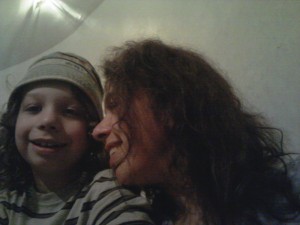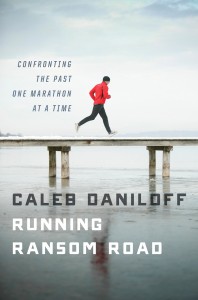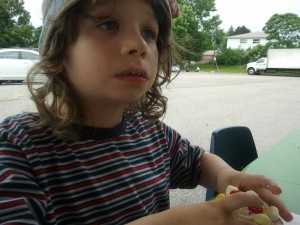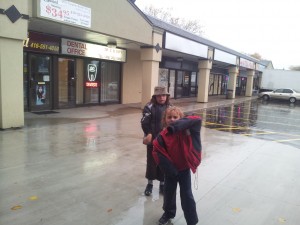Today’s prompt in the National Health Blog Post Month invites writers to describe why their lives might resemble a reality show. To be honest, it’s not much of a stretch to imagine my life as a reality show, especially when you consider the kind of stuff they’re putting on TV these days. They have everything from teen pregnancy to Mafia ex-wives to pig hunting to people getting simple trivia questions horribly wrong as they attempt to not have their cars repossessed. Several months ago, there was a show – an entire hour-long time-slot – devoted to a discussion about cricket poo.
I’m not even kidding.
Something tells me that a show about my life would be infinitely more entertaining than a show about cricket poo, and if people were watching that, then my show would be an absolute hit.
Let’s take a look at the cast of characters:
The Autie
Like many kids with autism, George is a complex little fella, seemingly full of contradictions. At nine, he still needs hand-on-hand assistance to brush his teeth, and yet he would probably be able to assemble a computer in three seconds flat, reminiscent of that scene in Forrest Gump where Forrest put a rifle together in record time. George has meltdowns when you least expect it, and at times when you just know there’s going to trouble, he is the picture of serenity. Every good show needs a dose of intrigue, and with George there is plenty of that.
There is also a feel-good element in watching George. Every day the kid comes out with some action or some little phrase that demonstrates the trajectory of his learning. Anyone watching would surely celebrate every little accomplishment.
The Hyperactive Neurotypical Kid
What would a reality show be without a hefty dose of drama? With James, there is plenty of that. So much that we have to be on guard against Shakespearean troupes taking him away to be in theatrical productions. He has strong opinions, and a strong sense of what he perceives to be justice, and he’s not afraid to express that. When I tell him to put on his pyjamas, he cries bitterly and says I’m ruining his life. He threatens to run away and says he’ll never hug me again.
Five minutes later he always hugs me. Because as much as he is a drama queen, James has a big heart and a generous spirit. Only the most hard-hearted soul would not feel utterly moved at the sight of James comforting his brother.
Besides, the kid has an imagination second to none. His mind takes him to all kinds of places, and sometimes, when he feels like telling a story, he takes the rest of us right along with him.
The Dad
My husband is so weird, he could have a reality TV show all to himself. I mean, he once deliberately got into the shower with all his clothes on. He says things that sound offensive but are actually hilarious. Like the time he said my hair makes me look like Gene Simmons, or the time he said the lunch I had made him looked like gorilla puke. He has a whacky sense of humour that would have the viewers rolling on the floor with laughter.
He would also have the female viewers swooning with his sense of romance. This is a man who approached a complete stranger in a park and told her she had beautiful eyes, who many years later proposed to that same woman in a grand gesture at her citizenship ceremony. When I was in Winnipeg on business years ago, he sent me a singer. A guy with a guitar showed up at my hotel room, and sang me a song while my husband was on the other end of the phone line.
The Mom
If it’s suspense you want, I’m your girl. I’m the one who’s always rushing around in a tearing hurry, trying to complete about 37 tasks all at the same time. I juggle so much at any given time that it’s anyone guess which one I’ll drop and what the consequences will be. Viewers will watch in slight bafflement as I take multitasking to a whole new level, and they will not be able to help sniggering as my exhaustion makes me do stupid things, like put lipstick on my lashes and mascara on my lips.
Here’s the thing, though: I may have a lot on my plate, like special needs parenting, distance running, a full-time job, commuting, the husband’s business – but I’m happy. Yes, I have my issues with depression and anxiety (which could also have a show all of their own), but I have this weird and wonderful family to keep me going.
The Set
The reality show would be filmed in my own home, and I wouldn’t be obsessively cleaning up and putting things away before the camera crew came. This is supposed to be reality, so it would have to include the ever-growing piles of paper on my desk, and the Lego all over the floor, and the discarded clothes lying around, that I swear reproduce when I’m not looking. Viewers would get a glimpse of my kitchen sink that’s always full of dishes no matter how much cleaning up I do, the holes in the drywall from where George has banged his head during meltdowns, and the unruly pile of shoes and coats by the front door.
So I have a cast and a set, and the plot is built-in to the fabric of our daily lives.
All that’s missing is a title.




















